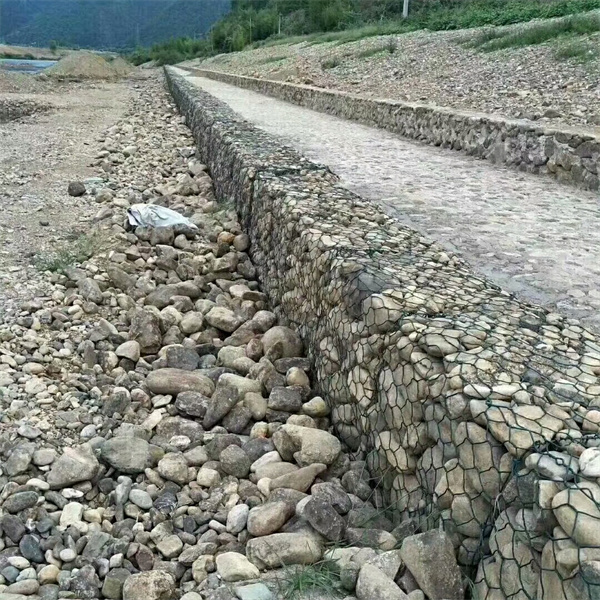Noy . 10, 2024 08:32 Back to list
Exploring the Benefits and Uses of Gabions in China’s Landscape Design
Understanding the Concept of China Gabion
Gabions have become an integral part of modern engineering and construction, particularly in areas related to civil engineering, landscaping, and environmental conservation. The term gabion derives from the Italian word gabbione, which means big cage. Essentially, gabions are wire mesh containers filled with rocks, stones, or concrete, widely used for various applications including erosion control, retaining walls, and aesthetic landscaping. In China, the application and production of gabions have witnessed significant growth, reflecting the country's rapid urbanization and development.
Historical Context
The use of gabions dates back to ancient times, where they were commonly used by military forces to form protective barriers. Over the centuries, their application has evolved significantly. Today, China has embraced gabion technology, especially with the surge in infrastructure projects. The country's strategic focus on sustainable development has also played a crucial role in the growing popularity of gabions as an eco-friendly construction alternative.
Advantages of Gabions
One of the primary advantages of using gabions is their structural stability and longevity. They are flexible, allowing them to adapt to the shifting conditions of the environment. This flexibility is particularly advantageous in areas prone to flooding or earthquakes. Gabions also promote natural drainage, which helps in reducing water pressure buildup, thereby preventing erosion and land degradation. Moreover, they are cost-effective since the materials used for filling the gabions are readily available and often sourced locally.
The aesthetic appeal of gabions is another aspect that has led to their increased popularity in China. Landscape architects have creatively used gabions in various designs, integrating them into parks, public spaces, and commercial buildings. Their natural appearance can blend seamlessly with the environment, creating visually pleasing structures that also serve practical purposes.
Environmental Impact
china gabion

In an era where environmental concerns are paramount, gabions present a sustainable solution. They can be designed to promote vegetation growth, allowing plant roots to bind the soil and reduce erosion further. This feature not only helps in maintaining the ecosystem but also enhances biodiversity by providing habitats for various species. In the context of China's devastating floods and soil erosion issues, gabions can play a significant role in mitigating these environmental challenges.
Construction and Installation
The construction and installation of gabions in China usually involve a few straightforward steps. First, the site is prepared and leveled, providing a solid foundation for the gabion structures. Next, the gabion baskets, which are typically made from galvanized steel wire or PVC-coated wire for enhanced durability, are assembled and filled with stones or other materials. After being filled, the baskets are securely fastened to prevent the contents from spilling out. Finally, the filled gabions are positioned and stacked to form the desired structure.
Future Prospects
As China continues its journey towards modernization and sustainable development, the future of gabions looks promising. The government’s initiatives to improve infrastructure while protecting the environment will likely lead to increased adoption of gabions in various projects. Furthermore, with advancements in material technology and construction methods, gabions may become even more efficient and cost-effective.
Conclusion
In summary, the concept of China gabion encapsulates a historical construction technique that has been reinvigorated in modern times. Offering structural stability, aesthetic versatility, and environmental benefits, gabions are proving to be an essential component in China's ongoing development initiatives. As the nation continues to navigate the challenges of urbanization and environmental preservation, gabions will undoubtedly play a significant role in shaping a sustainable future. Their growing adoption not only reflects a practicality in civil engineering but also signifies a commitment to harmonizing development with ecological values.
-
Visualizing Gabion 3D Integration in Urban Landscapes with Rendering
NewsJul.23,2025
-
The Design and Sustainability of Gabion Wire Mesh Panels
NewsJul.23,2025
-
The Acoustic Performance of Gabion Sound Barriers in Urban Environments
NewsJul.23,2025
-
Mastering the Installation of Galvanized Gabion Structures
NewsJul.23,2025
-
Gabion Boxes: Pioneering Sustainable Infrastructure Across the Globe
NewsJul.23,2025
-
Custom PVC Coated Gabion Boxes for Aesthetic Excellence
NewsJul.23,2025
-
Installation Tips for Gabion Wire Baskets in Erosion Control Projects
NewsJul.21,2025






